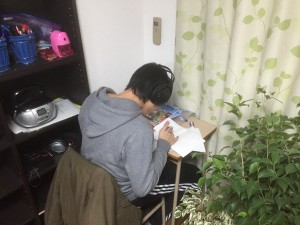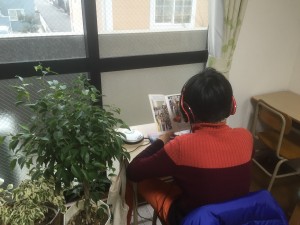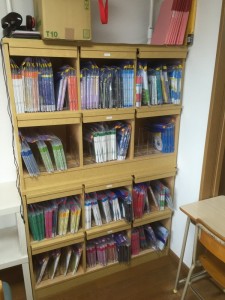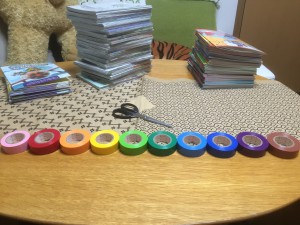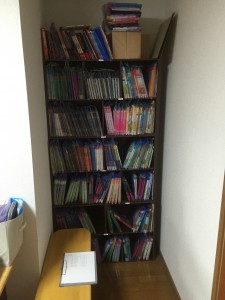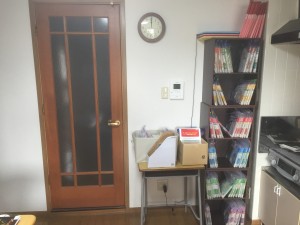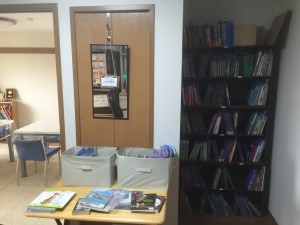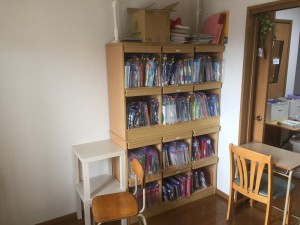Priorities
It’s so easy to get pulled off course
I thought I had my priorities fairly sorted out. You may have seen my now page. I was really enthusiastic about Derek Sivers’ hell yeah or no manifesto.
Normally this works pretty well, but unexpected opportunities can put you on tilt.
Last week I had one of those opportunities. I was offered a chance to work on a prestigious project. It didn’t align with my goals 100%, but paid well and might have led to further similar projects.
This week I am planning to turn it down. If I took it it would prevent me from focusing on the really important things.
It’s not hard to say no to boring or unpleasant work. It is really hard to say no to interesting work with lots of potential.
But maybe that’s the key to success.
Starting a Reading Program from Scratch
Do This (thanks, Derek Sivers)
I received an email last week. The writer (thanks for the inspiration Brett) asked for advice on how to start a reading program from scratch. No current resources, tiny budget.
What readers should be bought first? What else needs to happen?
This post is the start of an answer.
What is the purpose of the reading program?
You will need to think about the following questions. What is the reading program for?
- Is it to complement existing classes? Create new classes?
- How old are the students?
- What level of English and reading do the students have?
- How much time and money are you willing to put in?
What activities will be done?
The first question is will you use class time for reading? I strongly suggest you do so. In my experience, ER done only outside of class has a low uptake and most students do not do it regularly.
The next question is will students listen as well as read? For beginners and students below intermediate level (around YL 1.0), I strongly recommend listening while reading. It makes a huge difference to student progress and enjoyment.
Finally, will you do shadowing activities? Shadoku, shadowing tadoku (ER) is a very powerful technique, especially at the lower levels. Yuko Suzuki introduced me to the idea, and I will be doing a post soon describing the technique.
What books should be bought first?
With a limited budget, you should buy the following books:
Beginner level:
- Oxford Reading Tree core stories (probably the best materials)
- Story Street (unfortunately out of print now)
Lower-intermediate (JHS3, SHS beginners):
- Foundations Reading Library
- Building Blocks Library (level 4+ only)
- Story Street (level 4+ only, but out of print now)
Make sure you also get the CDs so that students can listen and read, listen only, and do shadowing activities.
What admin is necessary?
You will need to store books. I recommend either having each single book with a CD in the back (use soft CD cases from the 100 yen shop, taped into the back cover) or group the books in sets using ziploc bags (one set with CD per bag). Both approaches work.
Student should keep track of their reading. Counting the number of books is the easiest way, but for a long-term program I think tracking words is more useful. You can find word counts on the books, in the Tadoku Kanzen Guide, or online.
You’ll need to think about how to lend books to students. We use the honour system, but keeping track will reduce book losses (but take time). It’s a decision you will have to make in the context of your program.
Any questions?
Leave a comment below.
New (Academic) Year’s Resolutions
A plan for the 2016 academic year
Here in Japan the academic year runs from April until March, so we are coming up to the start of the 2016 one.
I have a few projects and plans:
- New ‘high-level’ classes at Tohoku University
From this year the university has introduced new high-level classes that students can choose to join instead of their regular English classes. This is a new system so we are not sure what it is going to look like. Assuming I get some students (it’s not certain, particularly for my Friday evening class!) I will be teaching advanced extensive reading classes and an advanced discussion class on the topic of personal finance. Very much looking forward to both of these. - PELLT (practical English language learning and teaching) website
This is a new website aimed at bringing together all our content, from self-produced work such as the ER@TU manual and the about-to-be-released PDR discussion method handbook, to curated links for learners and teachers. I’m very excited about PELLT and look forward to sharing more as it develops. - A few writing projects that I can’t talk about yet 🙂
I’ll post more about these if progress happens (certainly not a sure thing based on looking at my to-do list). - More on sendaiben.org and retirejapan.info
I’m planning to write more regularly for my two remaining blogs. Please share any content you enjoyed on social media -it really helps me to reach more people. - Year two at the Cambridge Academy
The other teachers at Cambridge just reorganized the reading classroom and it looks great. Looking forward to seeing the program develop as it goes into its second year. I’m particularly interested in how students progress -having students going into the second year of the program is uncharted territory. - Doing less
I am hoping to cut down on the number of things I do, so I can put more time into the remaining ones. If all goes to plan I’ll be teaching fewer classes and taking on fewer projects. This is something I struggle with but after fifteen years working flat out I need to find a bit of balance in my life.
How about you? Anything interesting on the horizon?
Stocktake!
Counting, Sorting, Checking
We spent the last couple of days counting and organizing books at Cambridge.
This gave us a chance to check all the books were in packs, the packs were labelled correctly, and CDs etc. were in the right place.
It also showed the gaps in our library. I am aiming for at least four packs of each of our ‘core’ sets, and right now we don’t have that -I feel a large book order coming up 😉
We also had a chance to reorganize our shelves to make classes run a bit more smoothly.
Right now our collection broadly looks like this:
YL: #books
0.1: 377
0.2: 384
0.3: 587
0.4: 396
0.5: 401
0.6: 345
0.7: 303
0.8: 183
0.9: 170
1.0: 149
1.1: 276
1.3: 140
1.5: 190
2.0: 190
2.5: 55
3.0: 100
4.0: 85
5.0: 7
6.0: 9
7.0+: 5
Total: 4352 (we also have a couple of hundred books that haven’t been processed yet, or that are sets missing books. I hope to get those integrated soon)
The lower levels (YL 0.1-1.0) consist mainly of sets. We have 1-6 of each set of core books, and mostly one or two sets for supplementary books (see this post for more detail about core and supplementary).
My experience with ER is that libraries are never finished, and it always feels like there aren’t enough books. At the moment the Cambridge library is adequate for our needs (around 60 student in the Academy program, along with about ten who are just borrowing books) but as students move into the intermediate level (YL 1.1+) we’re going to feel the pinch.
We’re also lacking at the advanced level. So another year or two of book buying on the horizon.
Actually, who am I kidding? We probably have decades of book buying on the horizon 🙂
This is one reason I am not too worried about competition in this space. In order to create a similar program, a competitor would need the know-how, millions of yen, and the confidence/desire to make it work.
Our current collection, assembled over the last 13 years, is probably worth well over 3 million yen and we are still ploughing back a big chunk of revenue into books.
Even if someone did manage to create a competitor program in our area, I think there are enough students in Sendai to go around.
I’ll be writing a post about how to start from scratch next, so don’t be discouraged if you don’t have any books or budget right now.
curriculum extensive reading high school junior high school school management
by sendaiben
2 comments
Cambridge Academy: Looking at Year Two
Still Evolving at a Rapid Rate
Since I wrote my last post a few weeks ago the program has continued to evolve. This will just be a quick update as we head towards the spring break and our planned stocktake and preparation for next year.
Conceptual Breakthrough
The most exciting development is a conceptual breakthrough I had a couple of weeks ago. As our library expanded, we continued buying more of our existing books, as well as new series. The new books mostly worked, but some are a better fit for our students than others. We started to run out of shelf space, and my reading checklists were getting crowded.
I also had to decide if we were going to buy multiple sets of the new books. If we did, would we continue making most students read all the books at each level? Even if the number of books at each level continued to grow?
Our system was getting twisted out of shape.
Then I had a conceptual breakthrough. It seems really obvious now, but it took me a while to spot it. We actually have two kinds of books in our lower level collection: core books, which most students should read, and supplementary books, which can be given to students that might enjoy them or need extra practice. We need multiple sets of core books, but only single copies of supplementary books. There should be a limited number of core books, but we can pretty much buy anything as a supplementary book.
In practice this means that most students will read the core books. Some students will read supplementary books if they need more practice at a certain level. Others may read supplementary books if they seem like they would enjoy them.
This breakthrough has made it easier to think about and plan the program.
Testing
We have decided to introduce a number of tests to the Academy in order to provide us with data, to motivate and encourage students, and to reassure parents.
We held the TOEFL ITP (pre-TOEFL) last week at the school. Unfortunately, and somewhat ironically given my rant post about using Eiken tests appropriately, we gave it to all our students, including the JHS ones. This was a mistake as it was far too hard for some of them.
In the future we will only use the TOEFL with our more advanced students.
We are also planning to use the JUMP and ACE tests from ELPA (for JHS and SHS students respectively) twice a year in April and December.
This will cost money and take class time, but I think it will help motivate students by showing them their progress and give our school and program more respectability.
Preparing for Next Year
Before April, we need to:
- do a stocktake and find out how many copies/sets of each book we have
- add missing book information to our database
- order more books to fill in gaps in our collection
- prepare new student files and checklists
- buy more CD players (a couple have broken)
- think about the interior design of the reading classroom (it’s fine as it is but I would like it to be more welcoming, comfortable, and relaxing)
The Academy from 2016 will have around 60 students. This is far fewer than I was hoping for, but broadly in line with my expectations.
In my experience it takes a few years for word of mouth about a program to take off, and the nature of an ER-based system is that results take years not months to emerge. I am still hopeful that our enrolment will take off in a year or two (year three or four of the program).
Wish us luck!


